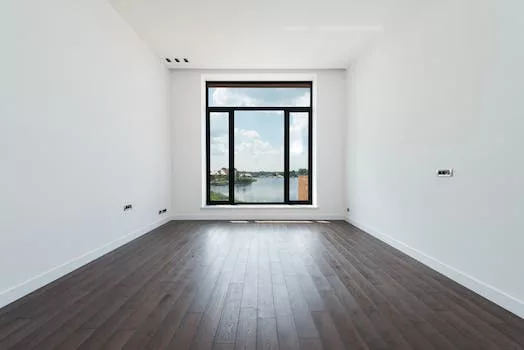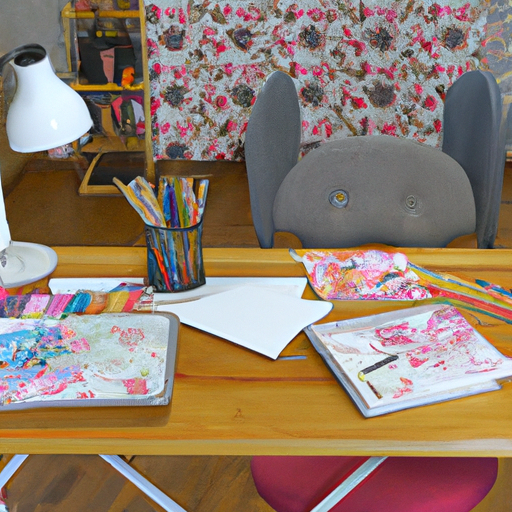Maximizing Functionality through Effective Space Planning in Home Design
The importance of space planning in home design cannot be overstated. It is a crucial aspect of creating a functional, comfortable, and aesthetically pleasing living environment. Space planning involves the careful consideration of how to best utilize the available space in a home, taking into account factors such as furniture placement, traffic flow, and the needs and preferences of the occupants. By maximizing functionality through effective space planning, homeowners can create a living space that not only looks great but also serves its intended purpose efficiently and effectively.
One of the primary objectives of space planning is to ensure that a home’s layout is functional and efficient. This involves considering how each room will be used and arranging furniture and other elements in a way that makes the most sense for the intended purpose. For example, in a living room, it is essential to create a comfortable seating area that encourages conversation and relaxation, while also providing adequate space for movement and circulation. Similarly, in a kitchen, it is crucial to ensure that there is sufficient counter space for food preparation and storage, as well as easy access to appliances and other essential items.
In addition to functionality, space planning also plays a significant role in the overall aesthetic of a home. A well-planned space can create a sense of harmony and balance, making the home feel more inviting and comfortable. This can be achieved by considering factors such as scale, proportion, and balance when arranging furniture and other elements within a room. For example, placing a large sofa in a small living room may make the space feel cramped and unbalanced, while a smaller sofa with additional seating options can create a more harmonious and visually appealing arrangement.
Furthermore, effective space planning can also have a positive impact on the occupants’ well-being. A well-designed home can promote a sense of calm and relaxation, reducing stress and improving overall quality of life. This can be achieved by creating distinct zones within a home for different activities, such as a quiet reading nook or a dedicated workspace. By providing designated areas for various tasks, homeowners can ensure that their living environment supports their needs and promotes a sense of order and organization.
Another essential aspect of space planning is considering the needs and preferences of the occupants. This involves taking into account factors such as age, mobility, and lifestyle when designing a home. For example, a family with young children may require a play area with ample storage for toys, while an older couple may prioritize accessibility features such as wider doorways and grab bars in the bathroom. By tailoring the design to the specific needs of the occupants, homeowners can create a living environment that is both functional and comfortable for all members of the household.
In conclusion, effective space planning is a critical component of successful home design. By carefully considering factors such as functionality, aesthetics, well-being, and the needs of the occupants, homeowners can create a living environment that is not only visually appealing but also serves its intended purpose efficiently and effectively. By maximizing functionality through effective space planning, homeowners can enjoy a comfortable, organized, and harmonious living space that meets their unique needs and preferences.
The Role of Space Planning in Creating Cohesive and Aesthetically Pleasing Interiors

The importance of space planning in home design cannot be overstated. It is a crucial aspect of creating cohesive and aesthetically pleasing interiors that not only look good but also function efficiently. Space planning involves the careful consideration of how to best utilize the available space within a home, taking into account factors such as furniture placement, traffic flow, and the overall layout of the rooms. By effectively planning the use of space, homeowners can create interiors that are both visually appealing and practical, ensuring that their homes are comfortable, functional, and enjoyable to live in.
One of the primary benefits of space planning is that it helps to create a sense of harmony and balance within a home. By carefully considering the placement of furniture and other elements, homeowners can ensure that each room feels well-proportioned and visually balanced. This not only makes the space more aesthetically pleasing but also helps to create a more comfortable and inviting atmosphere. A well-planned space can also help to make a room feel larger and more spacious, as the careful arrangement of furniture and other elements can help to create the illusion of more space.
In addition to creating a sense of balance and harmony, space planning also plays a crucial role in ensuring that a home functions efficiently. By carefully considering the layout of a room and the placement of furniture, homeowners can create spaces that are easy to navigate and use. This is particularly important in areas such as the kitchen and living room, where efficient use of space is essential for carrying out daily tasks and activities. A well-planned space can also help to reduce clutter and disorganization, as it encourages homeowners to think carefully about the items they bring into their homes and how they will be stored and organized.
Space planning is also essential for creating a cohesive design scheme within a home. By carefully considering the layout of each room and the placement of furniture and other elements, homeowners can ensure that their interiors flow seamlessly from one space to the next. This not only creates a more visually appealing and harmonious environment but also helps to make the home feel more unified and cohesive. A well-planned space can also help to highlight key features within a room, such as a beautiful fireplace or a stunning piece of artwork, ensuring that these elements are given the attention they deserve.
Furthermore, space planning plays a crucial role in ensuring that a home is adaptable and flexible to the changing needs of its occupants. As families grow and evolve, their requirements for space and functionality may change, and a well-planned home can easily accommodate these shifts. By carefully considering the layout of each room and the placement of furniture, homeowners can create spaces that can be easily adapted and reconfigured to suit their changing needs.
In conclusion, the importance of space planning in home design cannot be overstated. It is a crucial aspect of creating cohesive and aesthetically pleasing interiors that not only look good but also function efficiently. By effectively planning the use of space, homeowners can create interiors that are both visually appealing and practical, ensuring that their homes are comfortable, functional, and enjoyable to live in. Whether you are designing a new home or looking to update your existing space, it is essential to invest time and effort into careful space planning to ensure that your home is both beautiful and functional.
Balancing Comfort and Style: The Art of Space Planning in Home Design
The importance of space planning in home design cannot be overstated. It is a crucial aspect that determines the functionality, comfort, and aesthetic appeal of a living space. Space planning involves the strategic arrangement of furniture, fixtures, and other elements within a room to create a harmonious and efficient layout. This process requires a keen understanding of the principles of design, as well as the ability to balance comfort and style. By mastering the art of space planning, homeowners can create living spaces that are not only visually appealing but also comfortable and practical.
One of the primary objectives of space planning is to maximize the functionality of a room. This involves considering the purpose of the space and the activities that will take place within it. For instance, a living room should have ample seating for family members and guests, while a bedroom should have sufficient storage for clothing and personal items. By carefully considering the needs of the occupants, a designer can create a layout that accommodates these requirements while making efficient use of the available space.
Another essential aspect of space planning is ensuring that the room is comfortable and easy to navigate. This involves considering factors such as traffic flow, accessibility, and ergonomics. A well-designed space should allow for smooth movement between different areas of the room, with furniture and fixtures arranged in a way that minimizes obstructions and promotes ease of use. Additionally, the layout should take into account the needs of individuals with mobility challenges, ensuring that the space is accessible to all occupants.
In addition to functionality and comfort, space planning also plays a significant role in determining the aesthetic appeal of a room. A well-planned space should have a cohesive and visually pleasing design, with elements such as furniture, lighting, and accessories working together to create a harmonious atmosphere. This involves considering factors such as color, texture, and scale, as well as the overall style and theme of the home. By carefully selecting and arranging these elements, a designer can create a space that is both stylish and comfortable.
One of the key challenges in space planning is striking the right balance between comfort and style. While it is essential to create a visually appealing space, it is equally important to ensure that the room is comfortable and practical. This requires a careful consideration of the needs and preferences of the occupants, as well as a thorough understanding of the principles of design. By taking the time to plan and evaluate the space, homeowners can create a living environment that is both functional and aesthetically pleasing.
In conclusion, space planning is an essential aspect of home design that plays a critical role in determining the functionality, comfort, and aesthetic appeal of a living space. By carefully considering the needs of the occupants and the principles of design, homeowners can create a harmonious and efficient layout that maximizes the use of available space. Furthermore, by striking the right balance between comfort and style, a well-planned space can provide a living environment that is both visually appealing and practical. Ultimately, the art of space planning is a crucial skill that can greatly enhance the quality of life for those who reside within the home.
Q&A
Question 1: Why is space planning essential in home design?
Answer: Space planning is essential in home design because it ensures efficient use of available space, improves functionality, and creates a comfortable and aesthetically pleasing environment.
Question 2: How does space planning contribute to the functionality of a home?
Answer: Space planning contributes to the functionality of a home by organizing and allocating space for specific activities, optimizing traffic flow, and ensuring that furniture and appliances are appropriately sized and placed for maximum usability.
Question 3: What are the key elements to consider when planning space in a home design?
Answer: The key elements to consider when planning space in a home design include the size and shape of the rooms, the intended function of each space, the placement of furniture and appliances, storage requirements, and the overall aesthetic and style of the home.
Conclusion
In conclusion, space planning is a crucial aspect of home design as it ensures efficient use of available space, enhances functionality, improves aesthetics, and promotes a comfortable living environment. By carefully considering the needs and preferences of the occupants, space planning contributes to a well-organized and harmonious home that caters to the lifestyle and well-being of its residents.


